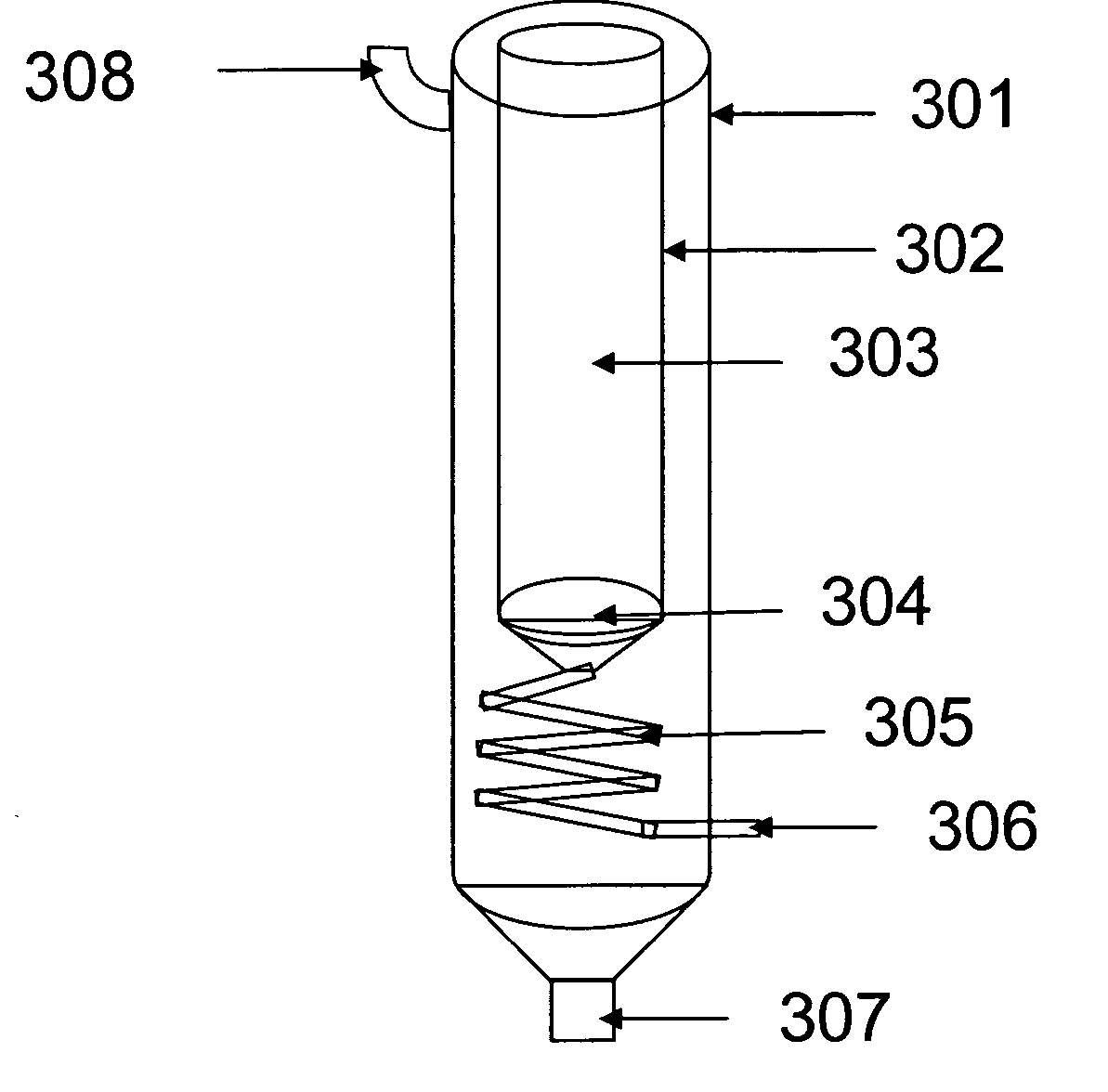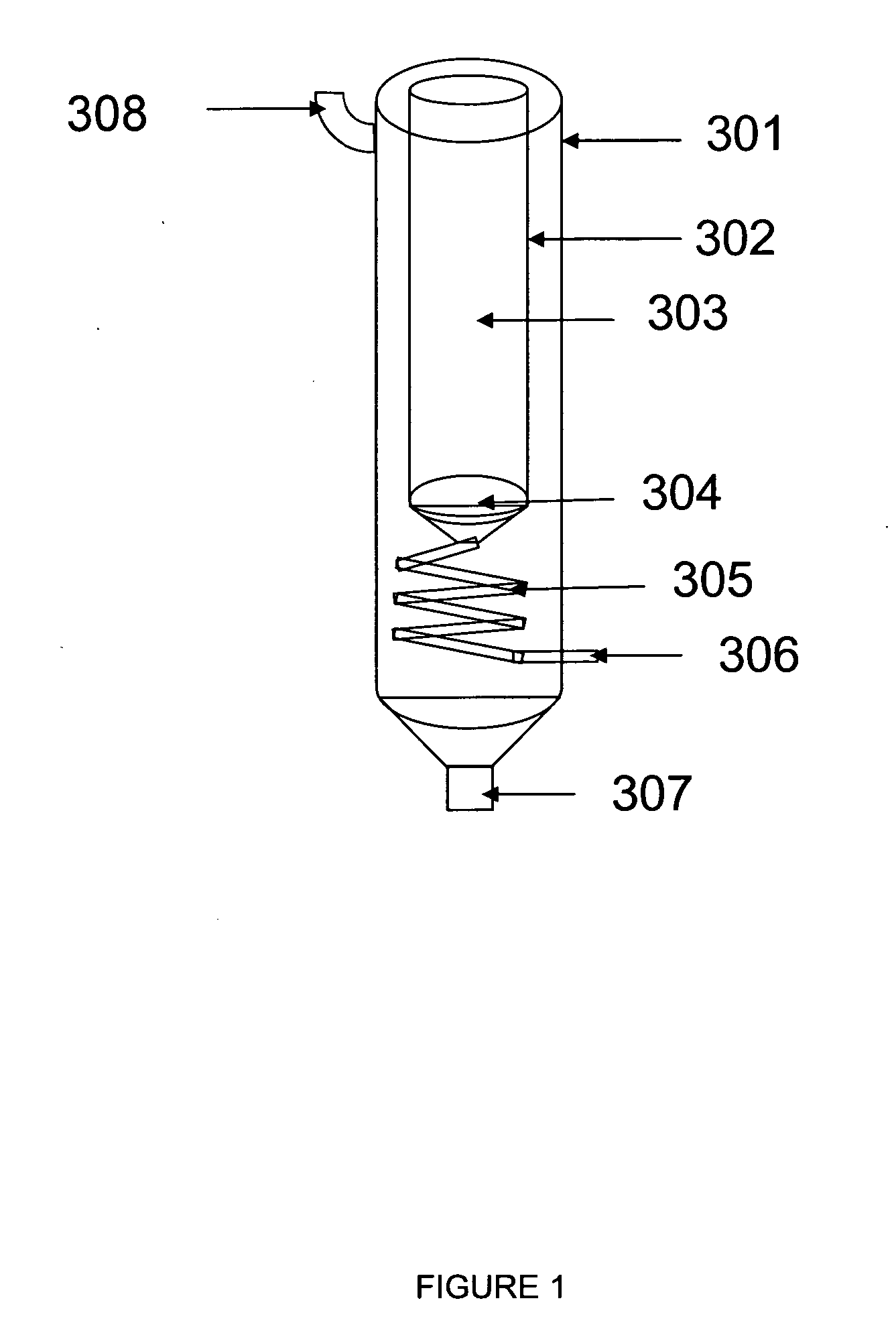Low melting polyester polymers
- Summary
- Abstract
- Description
- Claims
- Application Information
AI Technical Summary
Benefits of technology
Problems solved by technology
Method used
Image
Examples
example 2
[0173] This polyester polymer was modified with 3.0 mole % isophthalic acid, and contained about 3.6 mole % diethylene glycol. Its intrinsic viscosity was about 0.82 dL / g. The polyester polymer was produced by esterification of terephthalic acid with ethylene glycol followed by melt prepolymerization and polymerization to an intrinsic viscosity of about 0.82 dL / g. It was then crystallized in a continuous process by passing it through two horizontal jacketed elongated vessels which were agitated by a longitudinal shaft with radially-mounted paddles. The heating medium circulated through the jacket was set at 180° C., which yielded a temperature for the pellets exiting the vessel of about 165° C. Residence time of the polymer in the vessels was about 30 minutes. The level of residual acetaldehyde in the pellets was 125.6 ppm.
[0174] A 10 mg sample was analyzed by DSC according to the same procedure as set forth in Example 1. Two melting endotherms were observed, the lower of which at ...
example 3
[0175] This polyester polymer was also modified 3.0 mole % isophthalic acid, and contained about 3.6 mole % diethylene glycol. Its intrinsic viscosity was about 0.82 dL / g. This polymer was produced by the same melt-phase polymerization process described in Example 2, and then crystallized in a batch rotary double-coned dryer by heating the polymer up to 180° C. for several hours, then cooling back to ambient. The level of residual acetaldehyde in the pellets was 6.4 ppm.
[0176] A 10 mg sample was analyzed by DSC according to the same procedure as set forth in Example 1. Two melting endotherms were observed, the lower of which at 194° C. is defined as the actual melting point. The area of the endotherm represented by the low melt peak Tm1a was measured at 8.20 J / g, and the collective area above the endotherms was measured at 44.4 J / g, indicating about 37.3% crystallinity. This polyester would require about 12.6 J / g less energy to melt than the polyester described in Comparative Examp...
example 6
[0185] The polyester polymer of Example 3 was injection molded to determine the minimum processing set point at which it could be molded before unacceptable crystalline haze appeared in the preforms using the same protocol and haze standard as in Example 5, except that the screw speed was 58 rpm, the backpressure was 125 psi, the transfer time was 2.62 seconds, the recovery time was 1.5 seconds, for a total cycle time of 18.2 seconds.
[0186] Preforms made at 265° C. had acceptable haze, at 260° C. were acceptable, at 255° C were unacceptable, and to tighten the range, another run at 257° C. was found acceptable. Therefore, for this material, the minimum processing set point was found to be between 255° C. and 257° C. The lower melting point and / or the lower degree of crystallinity for this material allowed the material to be injection molded at a lower minimum temperature. With properly adjusted molding conditions, shorter cycle times and lower AA generation are possible with this p...
PUM
| Property | Measurement | Unit |
|---|---|---|
| Temperature | aaaaa | aaaaa |
| Temperature | aaaaa | aaaaa |
| Temperature | aaaaa | aaaaa |
Abstract
Description
Claims
Application Information
 Login to View More
Login to View More - R&D
- Intellectual Property
- Life Sciences
- Materials
- Tech Scout
- Unparalleled Data Quality
- Higher Quality Content
- 60% Fewer Hallucinations
Browse by: Latest US Patents, China's latest patents, Technical Efficacy Thesaurus, Application Domain, Technology Topic, Popular Technical Reports.
© 2025 PatSnap. All rights reserved.Legal|Privacy policy|Modern Slavery Act Transparency Statement|Sitemap|About US| Contact US: help@patsnap.com


